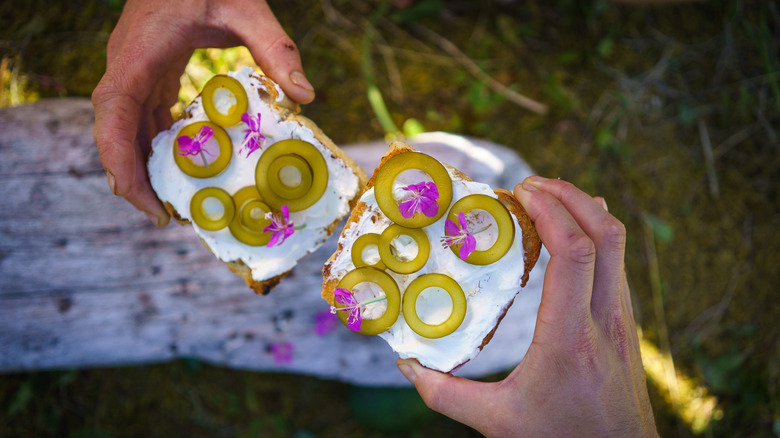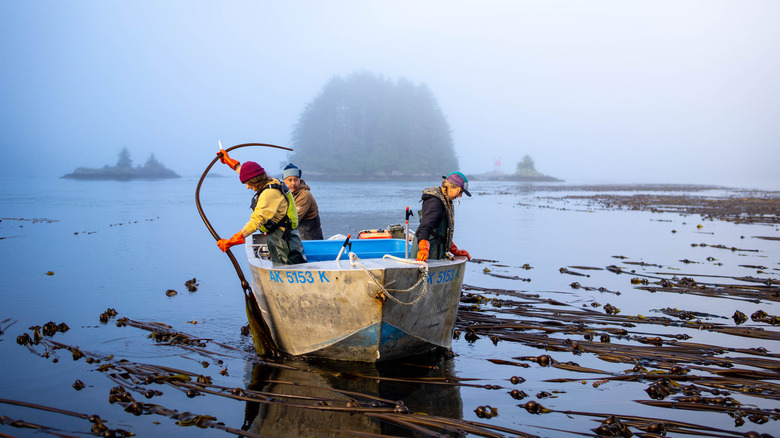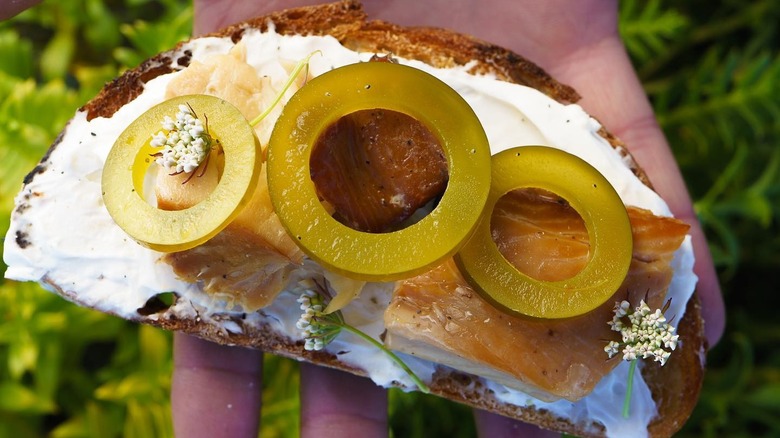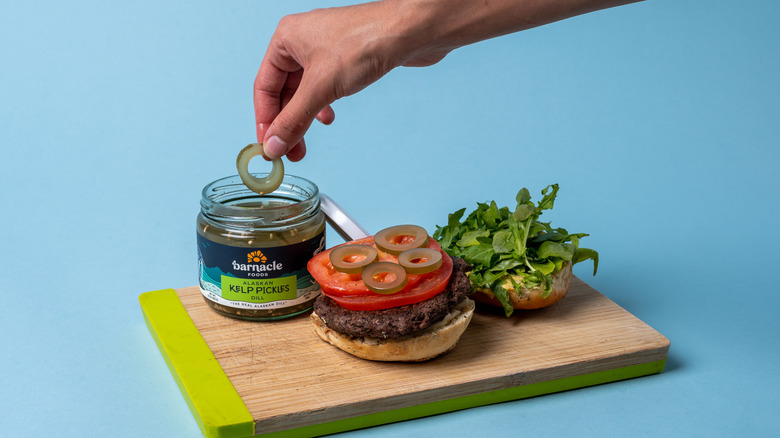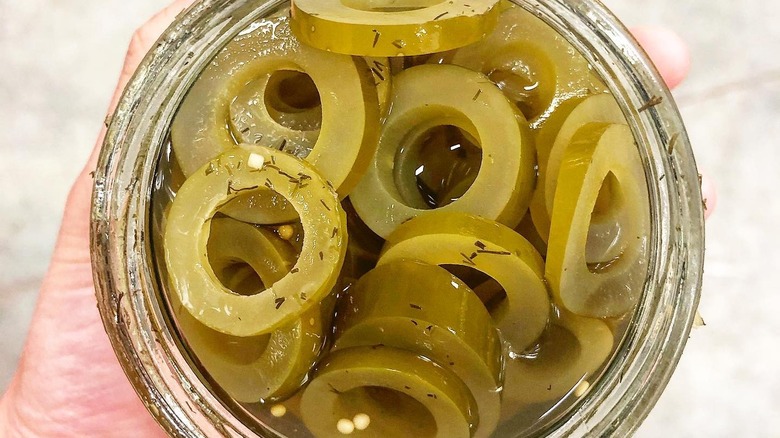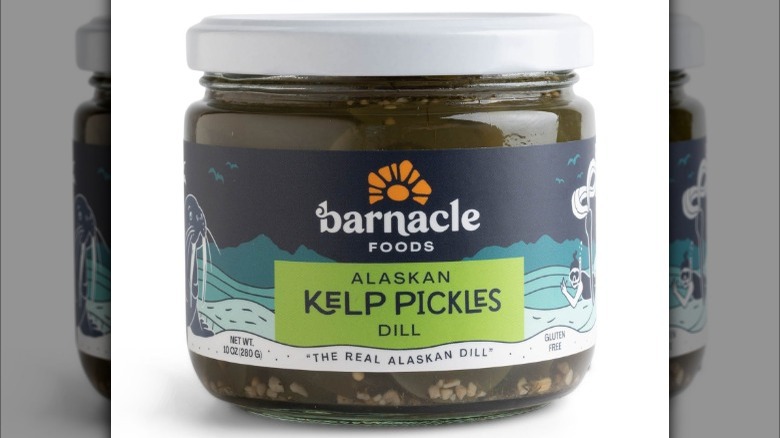What Are Kelp Pickles?
Around the world, there are about 1,500 different species of kelp, but only one is used to make one of the most sustainable superfood snacks: the kelp pickle. Scientifically known nereocystis luetkeana and more commonly known as bullwhip kelp, the seaweed is a type of brown macroalgae — but it tastes a lot better than it sounds. Fresh and crunchy, with a burst of savory umami, kelp pickles are an ocean-derived take on one of the oldest and most popular condiments. Only they have the potential to impact much more than just your burger.
As a part of a food group known as blue foods — a family of aquatic animals, sea vegetables, and algae — bullwhip kelp and other edible seaweed play a vital role in the United Nation's Sustainable Development Goals. When managed properly, wild-farmed bullwhip kelp uses little to no resources and has minute environmental effects. Still, it also has the potential to support the livelihoods and improve the nutrition of millions of people around the world. Now, that's what you call a superfood.
Nicknamed "the ocean multi-vitamin" by kelp pickle brand Barnacle Foods, The Scripps Institution of Oceanography reports that bullwhip kelp is packed with everything from dietary fiber and omega-3 fatty acids to essential amino acids and vitamins, making them much more than your average pickle in a jar. By finding ways to incorporate them into your everyday diet, you can potentially improve your health and support a stronger, more sustainable, and more diverse global food system.
How are kelp pickles made?
Before becoming pickles, the crunchy, jarred kelp rings begin as any other sea vegetable does: in the ocean. More specifically, the long, tubular, and hollow bullwhip kelp that is used to make kelp pickles grows along the rocky shores of Alaska and Northern California. There, they take root in rock formations underneath the water called holdfasts and grow upward toward the ocean surface. From spring to summer, the bullwhip kelp thickens and extends into long graceful stalks that form beautiful underwater forests. Then, by late summer or early fall, the blades that float on the ocean surface form spores and drop back to the ocean floor, starting the growing process all over again.
Recognized as some of the most productive and dynamic ecosystems on Earth, kelp forests provide shelter for underwater invertebrates and crustaceans, protection from predators and storms for fish and marine mammals, and, of course, food for you and all the life forms underneath the sea. This, combined with the fact that the seaweed is self-producing, fast-growing, and requires no land or resources, is the reason kelp and other seaweed are so sustainable.
In fact, many experts consider them as the foundation to building a sustainable food system — but that can only happen if they're managed responsibly. Thus, the harvesting of bullwhip kelp can only be done in specific locations and with special permits. Once they've been responsibly harvested, the seaweed is cleaned, sliced into rings, and jarred with a pickle brine for all to enjoy.
Nutrition information about kelp pickles
Kelp is an underrated superfood you should be eating more of, containing levels of vitamins and minerals that Foraged & Found claims are otherwise only found in supplement form. Wild kelp provides trace minerals that aren't typically found in soil-farmed foods, specifically iodine. This is a critically essential nutrient for your thyroid health — one that The World Health Organization estimates nearly 2 billion people around the world are deficient in.
But kelp's nutrition properties don't end at your thyroid. In a review for Barnacle Foods, RDN, LD, and IFNCP, Kari Natwick outlines that kelp is also beneficial to your brain and gut health. Along with brain-boosting vitamins, minerals, and antioxidants, kelp is packed with polyunsaturated fatty acids, mostly occurring from omega-3 and omega-6 fatty acids. However, the primary polyunsaturated fatty acid found in kelp is eicosapentaenoic acid, or EPA, which is critical for the health of brain cells and for preventing inflammation.
Kelp is also rich in another type of acid: an amino acid called glutamine that feeds the cells that line your gut and prevents intestinal permeability. As a good source of sulfated polysaccharides, kelp's fiber feeds the beneficial bacteria in your colon to support and diversify your gut's microbiota. Of course, all of this is only amplified by the rich probiotics that are naturally found in pickled foods — making kelp pickles a major ally to your gut's health.
How to eat kelp pickles
Sliced into rings, jarred, and pickled just like any other ingredient, kelp pickles have that same tangy and tart crunch you're used to — only they carry their own ocean-like umami flavor. Enhanced with marinades featuring combinations of various seasonings and herbs, kelp pickles are fresh, savory, and umami, fitting perfectly on a burger or sandwich, salad, and even the classic pairing of deviled eggs. Their subtle ocean flavor works particularly well in vegan tuna and tuna salad recipes, as it adds a slight fishy aroma — an important element that's often missing in plant-based varieties. In the same way, they're a great addition to veggie sushi and poke bowls.
If you're someone who likes to snack on pickles at home or politely ask your friends whether they'll be eating their pickle spear when out at restaurants, you'll be happy to know that kelp pickles are equally as good on their own. But, you can also take notes from kelp pickle brands, who use the sea veggies to create all kinds of products. Whether chopped and blended into a salsa, hot sauce, salad dressing, or soup, kelp pickles add a layer of umami flavor that you'll want to add to anything and everything.
Making kelp pickles at home
If you live in Alaska or Northern California, there's a good chance you could get your hands on some fresh bullwhip kelp at your local fish market, a farmer's market, or even washed up on the beach after a large storm — so you may as well make your kelp pickles yourself. Before doing that, however, always check with your local authorities. As touched on before, harvesting bullwhip kelp often requires a permit. Laws also prohibit you from collecting bullwhip kelp in certain areas, and even if you're collecting it from the beach, you'll want to confirm the water conditions with your local authorities to ensure it is, in fact, safe for you to eat.
When you do get your hands on some fresh bullwhip kelp, though, the pickling process is as simple and easy as any other foods you can pickle. Start by cleaning and cutting your bullwhip kelp into small rings, then throw them in a jar and sprinkle them with some canning salt. After letting them sit for about an hour, rinse the kelp and add a mixture of sugar, your chosen seasonings, and vinegar to a pot. Once you bring the mixture to a boil, add the rinsed kelp and watch them turn bright green. Then, pack the kelp tightly into jars, ladle the syrup over them, put on the lids, and let the pickling begin. Kelp pickles can be eaten right away but are best in about a week.
Where to buy kelp pickles
While you may not come across kelp pickles as commonly as other pickled foods, they're relatively easy to get your hands on with the help of the internet. Brands like Barnacle Foods offer different flavored kelp pickles, including spicy, extra sour, sweet and tangy. You can find them, along with the rest of their kelp-based products, at specialty food stores and fish markets across the country. But, if you're not having any luck, you could always order them online or through the company's website.
For more options, check out Foraged & Found, another brand that makes kelp-based alternatives to everyday foods, including salsa, pesto, and sauces. Its kelp pickles come in jars of three different flavors: dill, spicy, and bread and butter — all made from bullwhip kelp sourced wildly from Alaskan shores. While you may not be able to find its products in stores, you can order a 12-ounce jar directly from the company's website for $9.99 or via Amazon.
There is also Alaska Simple Pleasures, which harvests its bullwhip kelp from Sitka, Alaska. However, these will be a bit pricier than the other options, coming in at about $12 for a 6.75-ounce jar, not including the flat-rate shipping. But, if you become possessed by the tangy crunch kelp pickles pack, they could be worth a try.
